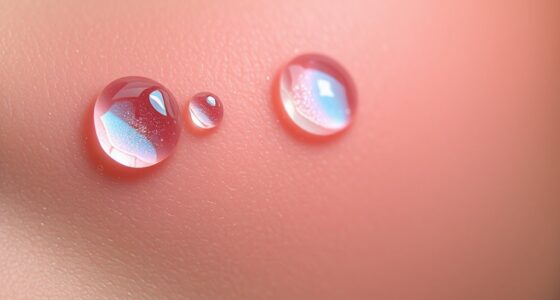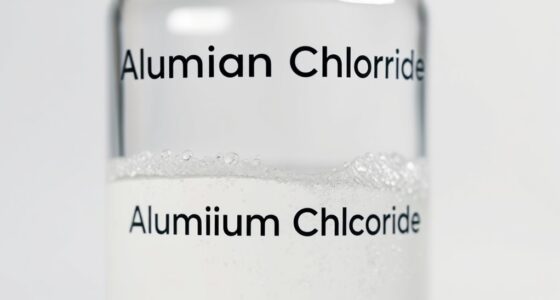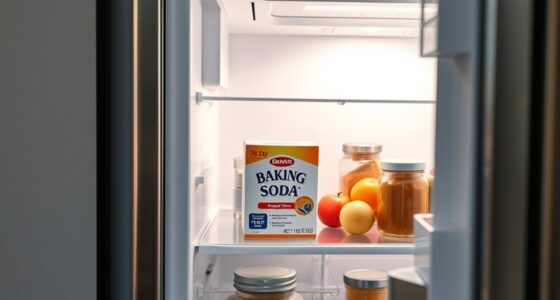The chemistry of coffee starts with its complex composition of sugars, proteins, lipids, acids, and aromatic compounds in the beans. During roasting, reactions like Maillard, caramelization, and pyrolysis develop flavors, color, and aroma. Brewing methods extract these compounds differently, influenced by bean variety and processing. Storage and chemical changes over time also affect flavor and aroma, creating the rich complexity you enjoy. If you continue exploring, you’ll uncover how each step shapes your perfect cup.
Key Takeaways
- Coffee’s flavor and aroma derive from complex chemical compounds formed during roasting, including Maillard reactions and caramelization.
- Key chemical constituents like chlorogenic acids, caffeine, and volatile aromatic compounds influence taste, acidity, and aroma profiles.
- Processing methods and brewing techniques affect extraction of chemical components, shaping the final flavor and sensory experience.
- Storage conditions cause chemical changes, such as chlorogenic acid degradation, impacting coffee’s freshness and flavor quality.
- The interplay of non-volatile and volatile compounds, along with chemical transformations, creates coffee’s unique and layered sensory profile.
The Key Chemical Components of Coffee Beans
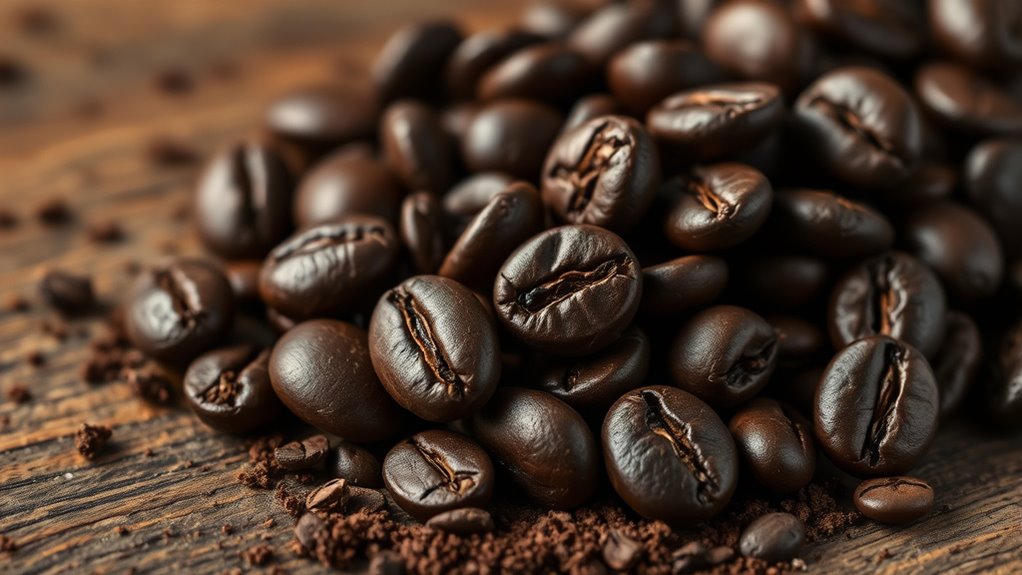
Coffee beans contain a complex mix of chemical components that define their flavor, aroma, and nutritional profile. You’ll find carbohydrates making up about 60%, mainly polysaccharides like pectin and hemicellulose, which contribute to the bean’s structure. These carbohydrates also influence the sweetness and texture of brewed coffee. Proteins account for roughly 13%, providing essential amino acids. Fats and waxes, including triglycerides, are present at 0.1-0.8%, with oils playing a key role in flavor and mouthfeel. Water content typically ranges from 10-13%, influencing texture and brewing. Coffee also contains notable compounds like caffeine (0.5-2.6%), chlorogenic acid (4-6%), and phenolic acids that impact flavor and health benefits. The presence of chlorogenic acids also contributes to coffee’s antioxidant properties. Minor compounds such as volatile aromatic substances, alkaloids, and organosulfur compounds further define coffee’s distinctive aroma and taste profile.
How Roasting Transforms Coffee Chemistry
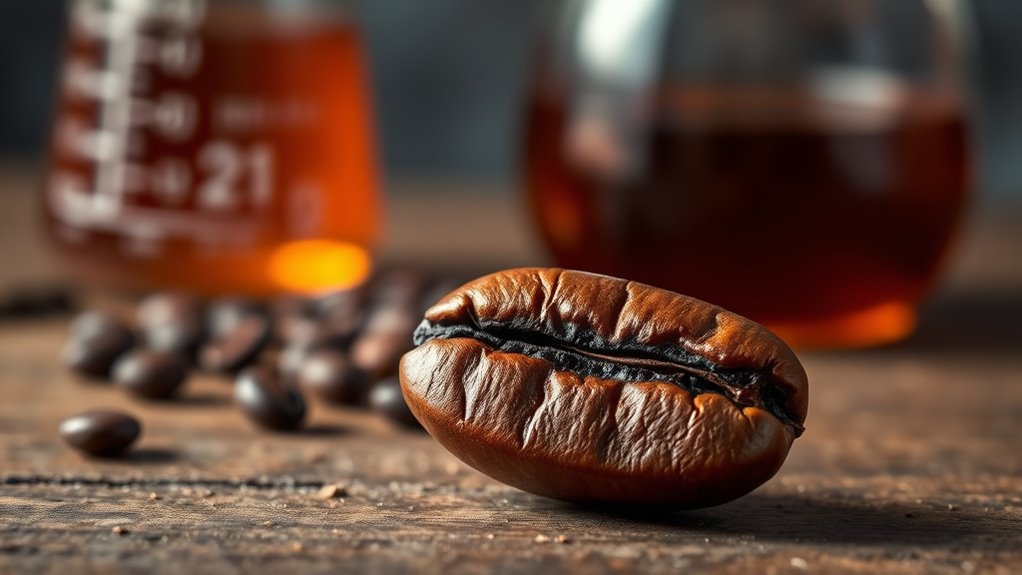
Roasting triggers a series of complex chemical reactions that fundamentally change the beans’ composition and flavor profile. The Maillard reaction begins around 150°C, where amino acids and carbohydrates react to produce melanoidins, giving the coffee its brown color and developing nutty, toasted, and caramel notes. This reaction also contributes to the formation of key aroma compounds, enhancing the sensory complexity of the final brew. As temperature rises, sugar caramelization occurs between 170°C and 200°C, creating aromatic compounds and enhancing sweetness. Pyrolysis at about 220°C further alters the beans, generating volatile flavors and deepening color, but excessive heat causes charring and bitterness. The cracking stages—first around 205°C and second near 225-230°C—release moisture, alter cell structures, and develop darker, oilier beans. These transformations profoundly influence acidity, aroma, and overall flavor, shaping the final cup. Additionally, the chemical reactions during roasting significantly impact the development of acidity and body, which are essential for the coffee’s overall profile.
The Role of Acids in Shaping Coffee’s Flavor
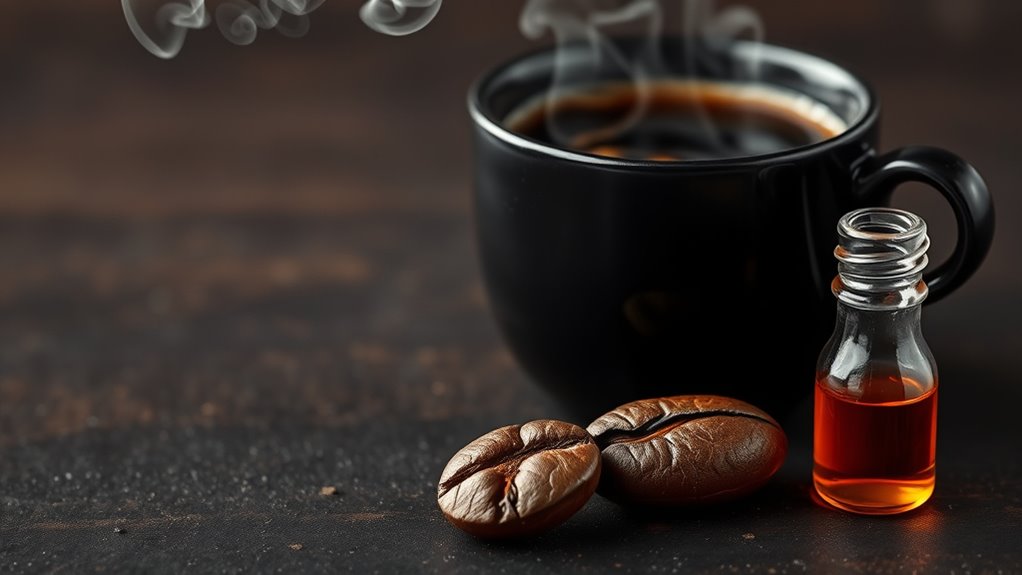
Acids play an essential role in shaping the flavor profile of coffee, influencing everything from aroma to mouthfeel. Organic acids like citric and malic give coffee fruity, citrus, and stone fruit notes, adding brightness and complexity. Acetic acid, formed during wet processing, introduces vinegar-like flavors, while formic acid adds fermented and pungent aromas. Quinic acid, which increases in darker roasts, imparts bitterness and a dry mouthfeel. Chlorogenic acids contribute to bitterness and astringency, breaking down into quinic and caffeic acids during roasting. These acids enhance or create aromas, emphasize sourness, and balance bitterness. Processing methods, altitude, and roasting influence acid levels, affecting flavor. The presence of acids is also affected by storage conditions, which can alter their concentrations over time. Additionally, acid content can be influenced by water quality during brewing, further impacting the final flavor. Overall, acidity elevates coffee’s complexity, with higher acidity often preferred for its lively, vibrant character.
Brewing Techniques and Their Impact on Chemical Extraction

Different brewing techniques considerably influence how chemical compounds are extracted from coffee grounds, shaping the final flavor profile. In percolation methods like drip brewing, water flows continuously through the grounds, efficiently extracting solubles and creating a balanced cup. Immersion methods, such as French press or AeroPress, rely on prolonged contact time, which enhances richness but requires careful timing to prevent over-extraction. Water temperature plays a crucial role; ideal ranges between 195°F and 205°F optimize solubility without over-extracting undesirable compounds. Grind size also impacts extraction: finer grinds speed up solubilization, ideal for espresso, while coarser grounds suit methods like French press. Each technique’s variables—contact time, temperature, grind size—combine to influence the chemical reactions, like hydrolysis and dissolution, shaping the coffee’s flavor. Proper control of these variables ensures efficient extraction while minimizing the release of unwanted compounds, highlighting the importance of efficient heat transfer in brewing.
The Influence of Bean Varieties on Chemical Profiles
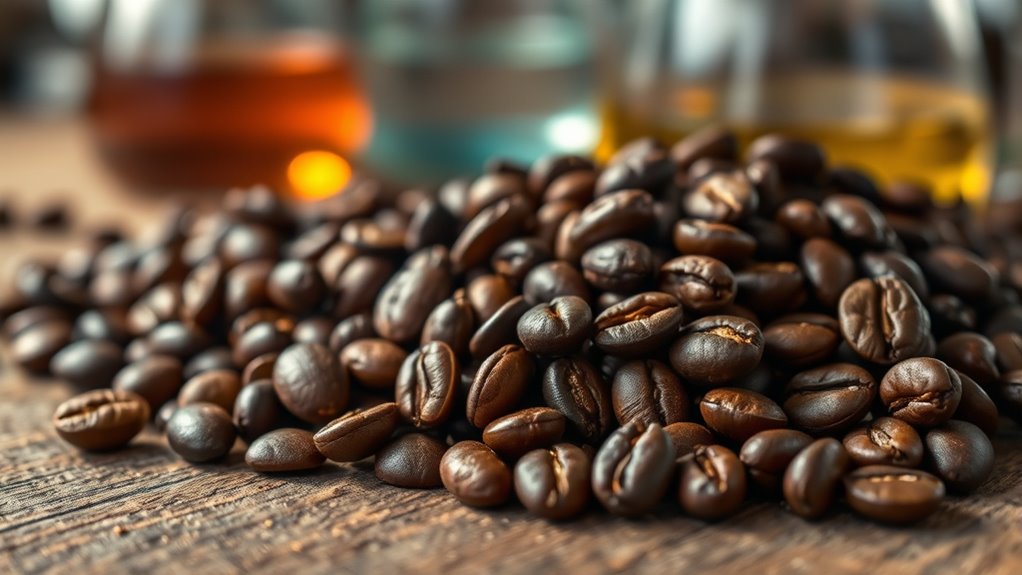
The chemical profiles of coffee beans are primarily shaped by their varietal genetics, which determine the levels of key compounds like caffeine, chlorogenic acids, lipids, and carbohydrates. For example, Arabica beans typically have about 1.2% caffeine, resulting in a smoother taste, while Robusta contains around 2.2%, contributing to a harsher flavor. Chlorogenic acids vary between these species, influencing acidity and antioxidant properties. Lipids such as triglycerides and diterpenes affect aroma and mouthfeel, while carbohydrates like sucrose impact flavor development during roasting. Different varieties, such as Buhun or Sigararutang, also display unique metabolite profiles, including citric and malic acids. Lesser-known spots provide opportunities for unique coffee tasting experiences, often influenced by the specific environmental conditions of their growing regions. These genetic differences shape the flavor, aroma, and health benefits you experience in your coffee, making bean choice essential to your preferred cup.
Chemical Changes During Coffee Processing and Storage
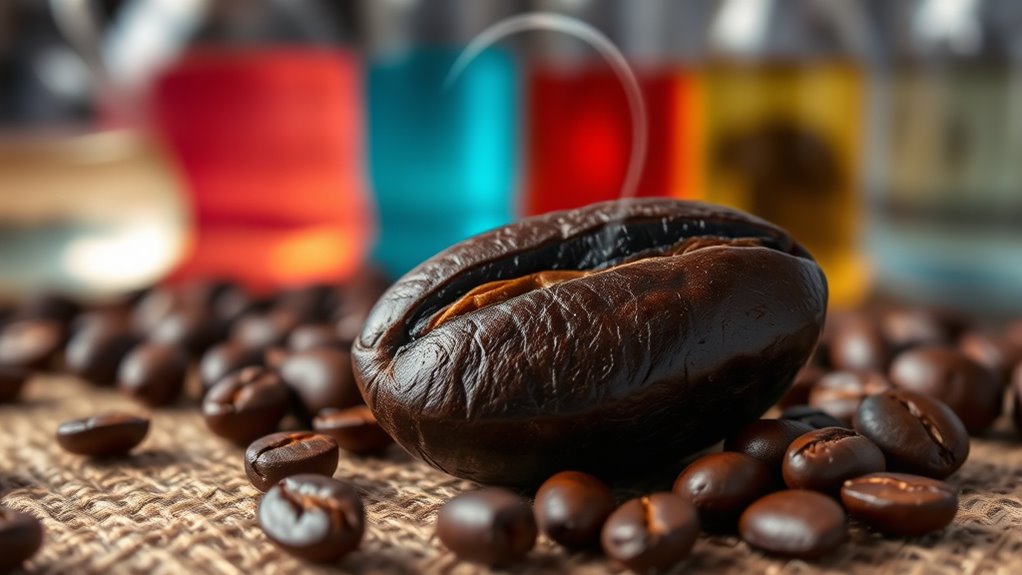
During coffee processing and storage, chemical changes continually shape the final flavor and aroma you experience in your cup. During roasting, reactions like the Maillard process create complex flavors and deepen color, while caramelization adds sweetness. Pyrolysis releases volatile compounds that influence aroma, and dehydration concentrates flavors as moisture decreases. AI safety measures are crucial to ensure consistent quality and prevent unintended alterations in flavor profiles. Roasting conditions, such as temperature and time, impact acidity and bitterness, shaping the coffee’s profile. In storage, oxygen exposure accelerates oxidation, degrading flavors and causing rancidity, while moisture and light promote further chemical breakdown. Proper packaging and stable temperatures help preserve freshness. Even after roasting, volatile compounds evaporate, and fats oxidize over time, altering aroma and taste. These ongoing chemical changes determine how your coffee evolves from fresh brew to stale cup.
How Chemical Variability Affects Sensory Experience
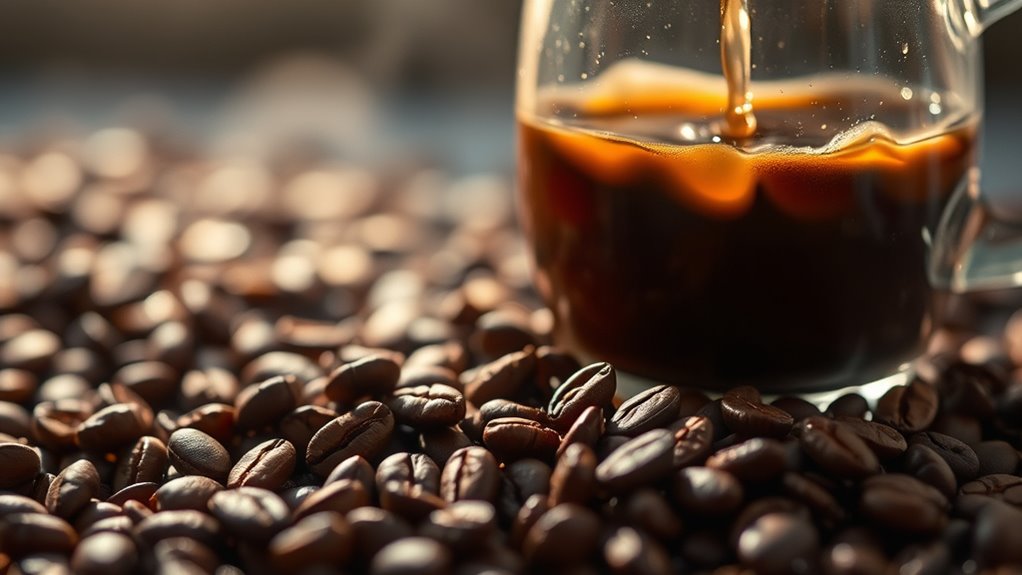
Chemical variability in coffee considerably shapes your sensory experience by influencing the balance of flavors and aromas you perceive. Differences in acid composition add complexity, with acids like formic, quinic, and chlorogenic acids contributing sourness, bitterness, metallic notes, and astringency, which can enhance or overshadow other flavors. Changing Gears on a Gravel Bike During brewing, compounds like bitter-tasting acids extract faster, decreasing their concentration over time and revealing sweeter or floral notes. Chemical markers, such as hydrolysis products of chlorogenic acids, can signal acceptance or rejection, affecting overall enjoyment. Storage further impacts flavor, as chemical degradation reduces aroma and introduces off-flavors, intensifying bitterness and acidity. This variability creates a dynamic sensory experience, where subtle chemical shifts considerably influence how you perceive your coffee.
Exploring the Complex Flavors Through Coffee Chemistry
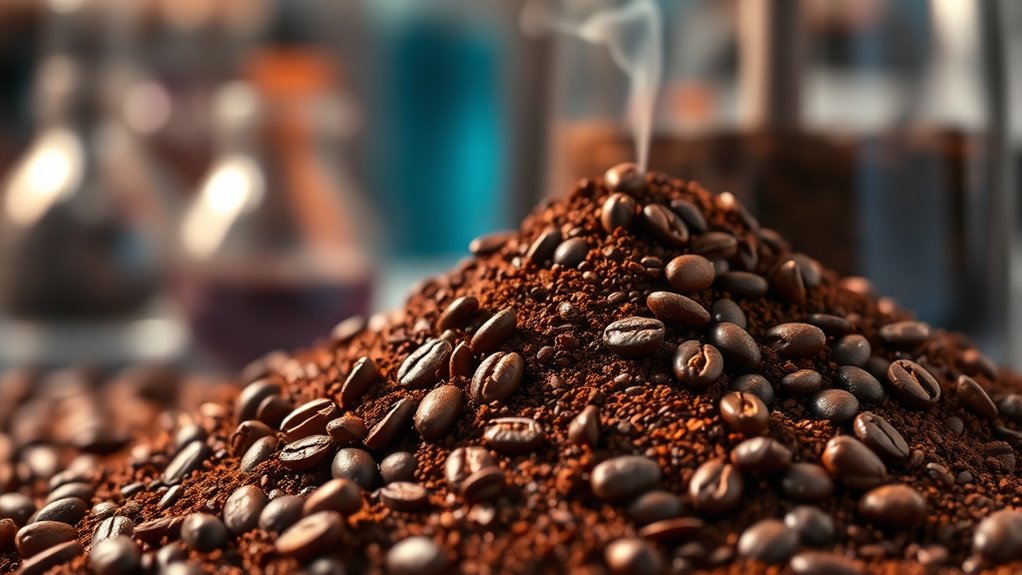
Exploring the complex flavors of coffee reveals how a variety of compounds work together to create its signature aroma and taste profile. Volatile aromatic compounds like acetaldehyde add fruity, apple-like scents, while 2-methylpropanal offers nutty, toasted notes. Methanol provides spicy, herbal hints similar to mint and thyme, and pyrazines bring earthy, smoky aromas from roasted foods. Furans contribute caramel and toffee sweetness, reminiscent of baked goods. Kitchen textiles and accessories can influence the overall sensory experience by affecting aroma retention and presentation. Non-volatile alkaloids like caffeine influence perceived strength and bitterness, with trigonelline adding spicy flavors and aroma precursors. The Maillard reaction and caramelization during roasting generate melanoidins, aldehydes, and furans, enriching aroma and flavor. Organic acids and sugars shape acidity, brightness, and sweetness. Lipids, proteins, and minerals further modulate aroma, mouthfeel, and overall complexity in your cup.
Frequently Asked Questions
How Does Water Ph Influence Coffee’S Chemical Extraction During Brewing?
Water pH plays a vital role in coffee’s chemical extraction during brewing. If your water is too alkaline, it can dull bright notes and slow extraction, making your coffee taste flat.
On the other hand, slightly acidic to neutral pH helps dissolve flavor compounds efficiently, enhancing brightness and complexity.
Maintaining the right pH guarantees ideal solubility, balancing acidity, bitterness, and aroma for a richer, more flavorful cup.
What Role Do Aromatic Compounds Play in Coffee’S Overall Flavor Profile?
Ever wonder what gives coffee its rich complexity? Aromatic compounds are key players, shaping the flavor profile you experience. They include pyrazines, furans, and phenolics, each adding nutty, roasted, smoky, or spicy notes.
These compounds interact and vary based on roasting, brewing, and bean origin, creating a nuanced sensory experience. Without these aromatic compounds, coffee would lack its distinctive, inviting aroma and layered flavors that keep you coming back.
How Do Storage Conditions Affect Coffee’S Chemical Stability Over Time?
You should know that storage conditions greatly impact coffee’s chemical stability over time. Keeping coffee in a cool, dark, and dry environment slows down chemical reactions that cause flavor and aroma loss.
Using airtight, opaque packaging minimizes oxygen and light exposure, helping preserve freshness longer. Proper temperature, humidity, and packaging are essential to prevent degradation, ensuring your coffee stays flavorful and aromatic for as long as possible.
Can Different Brewing Temperatures Alter the Chemical Composition of Coffee?
Different brewing temperatures definitely change the chemical makeup of your coffee. When you use hot water, it speeds up reactions, extracting more acids, oils, and volatile compounds, making your brew more aromatic and acidic.
Cold brewing, on the other hand, extracts fewer acids and volatile aromatics, resulting in a smoother, less acidic coffee.
How Does the Degree of Roasting Impact Caffeine Levels in Coffee?
Imagine the dark, glossy beans transforming in the roaster’s heat, their surfaces caramelizing like a rich, smoky glaze. The degree of roasting doesn’t considerably change caffeine levels; it remains stable through the process.
You’ll find that darker roasts might seem bolder, but their caffeine content per bean is nearly the same as lighter roasts when measured by weight. Your caffeine intake depends more on how you brew than the roast level itself.
Conclusion
By understanding the intricate interplay of coffee’s chemistry, you can craft more captivating cups. Embrace exploration, experiment with variables, and savor the subtle shifts in flavor. Let curiosity be your compass, and your keen knowledge keep your coffee journey vibrant. Remember, the deeper you explore into the details, the richer your appreciation becomes. So, seize the science, sip with sensation, and let your coffee experience continually evolve and excite.


